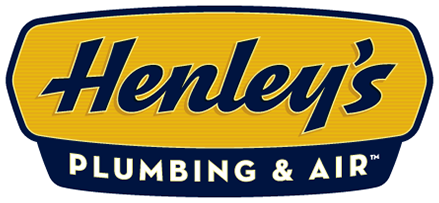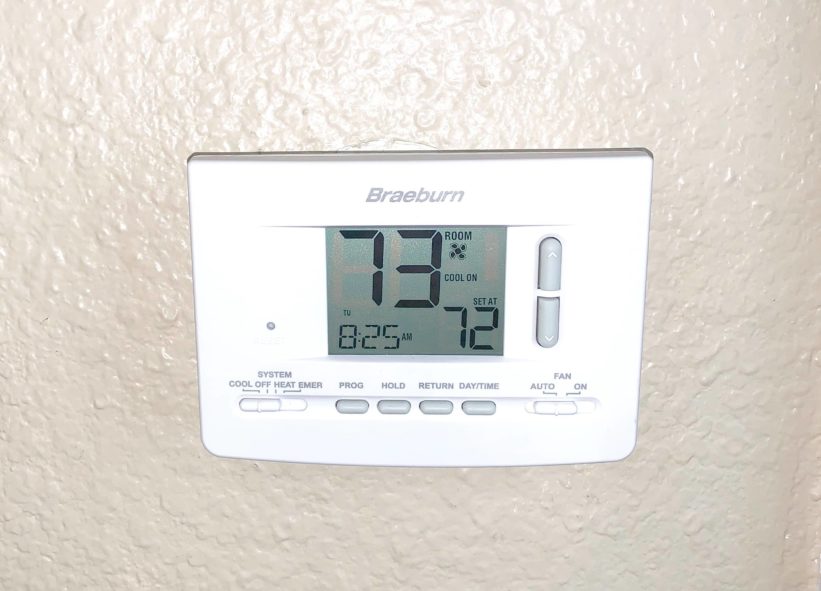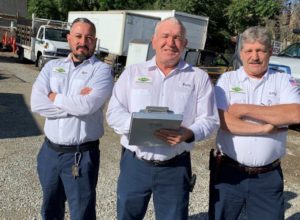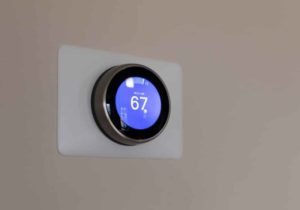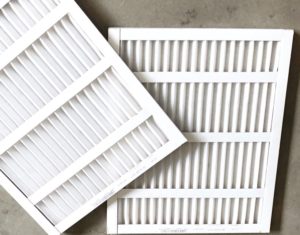Your thermostat is the main control center for your heating and air conditioning. Have you ever taken a look at what it’s reading versus what you’re feeling in your home and felt that something wasn’t quite right? The thermostat can be faced with several issues that can affect your HVAC system. Here are seven reasons why yours might not be working correctly.
Your Thermostat Isn’t Connected Properly
It is entirely possible that your thermostat isn’t connected properly, or even at all. Take a look at the power source. Make sure that the power switch is turned on. Check to ensure that you don’t have a tripped breaker or blown a fuse. If your thermostat uses batteries, make sure that those haven’t died. Any of these issues can prevent your thermostat from working correctly, which can then keep your HVAC system from working.
The Parts Don’t Match
Unfortunately, you can’t just go out and get any thermostat that looks good. Just because you like the look of a particular thermostat, this doesn’t mean that it will be a good one to use in your home. For proper functionality, your thermostat needs to match your HVAC system. Using the wrong type of thermostat can result in communication errors. This can then lead to big problems, including system failure. If you’re not sure whether or not your thermostat matches your unit, your HVAC technician can help.
It’s in the Wrong Spot
Location, location, location. It’s a hearing you say a lot. You might not have heard it about a thermostat, though. The thing is that many thermostat issues are caused simply because it’s located in the wrong spot. For instance, if the location is near a doorway (or anywhere else a draft might come through), the temperature it registers will be different than the actual temperature inside the rest of the house. Something generating heat right next to the thermostat can also cause issues with temperature readings.
Something’s Loose in the Thermostat
Loose connections can cause big problems. Before you remove your thermostat cover, make sure that you either remove the batteries or turn off the power. After removing the cover, check for any loose wires or terminal screws. You should also check for issues such as broken or detached wires and corrosion. If you do find anything loose, turn off power to the unit, and then carefully tighten them. However, if you come across a more significant problem, such as a broken wire, you may want to consider consulting an HVAC professional. (Call Us!) Do not attempt any repairs that you do not feel confident doing.
It’s Dirty
Dirt, dust, and other debris can build up over time on your thermostat as well as inside of it. All of this gunk can coat the interior, affecting both electrical and mechanical components. When this happens, your thermostat is more likely to function erratically. You might even have a sudden system failure. It is crucial that you keep your thermostat clean. When you clean it, make sure that you don’t get anything wet. This can cause even more problems. Instead, use a soft, dry brush and clean gently. You can also use compressed air (such as the compressed air that is used to clean inside computers) to get rid of debris from the interior. Regular cleanings only take a few minutes but could prevent serious problems.
The Thermostat Isn’t Level
Your thermostat should be sitting level on your wall. If not, your HVAC system might start short cycling. This means that it can start to run almost continuously, which will destroy its energy efficiency and cause your energy bills to get higher and higher. It’s easy to make sure your thermostat is level. If you don’t own a level, you can get one at a very affordable price at any home repair store.
Short cycling can also be the result of a poorly calibrated anticipator. The anticipator lets the thermostat know when to turn the HVAC system off. The anticipators in older thermostats need to be adjusted manually. If your HVAC system is short cycling and your thermostat is level, you can try adjusting the anticipator. Let the HVAC system run for a full cycle to see if that helps to solve your issue.
Your Thermostat is Just Plain Old
Thermostats aren’t designed to last forever. While it might seem like an expensive endeavor to replace your current thermostat, you might be spending more on wasted energy and attempted fixes. There are plenty of excellent programmable thermostats available today that are incredibly simple to use. If you’re unsure of what type to get for your home, your HVAC technician can help to point you in the right direction.
A properly functioning thermostat is essential for ensuring that your HVAC system can properly heat and cool your home. If you’re having trouble pinpointing why your thermostat isn’t working correctly, or you need to replace your old one, our HVAC specialist will be able to help.
